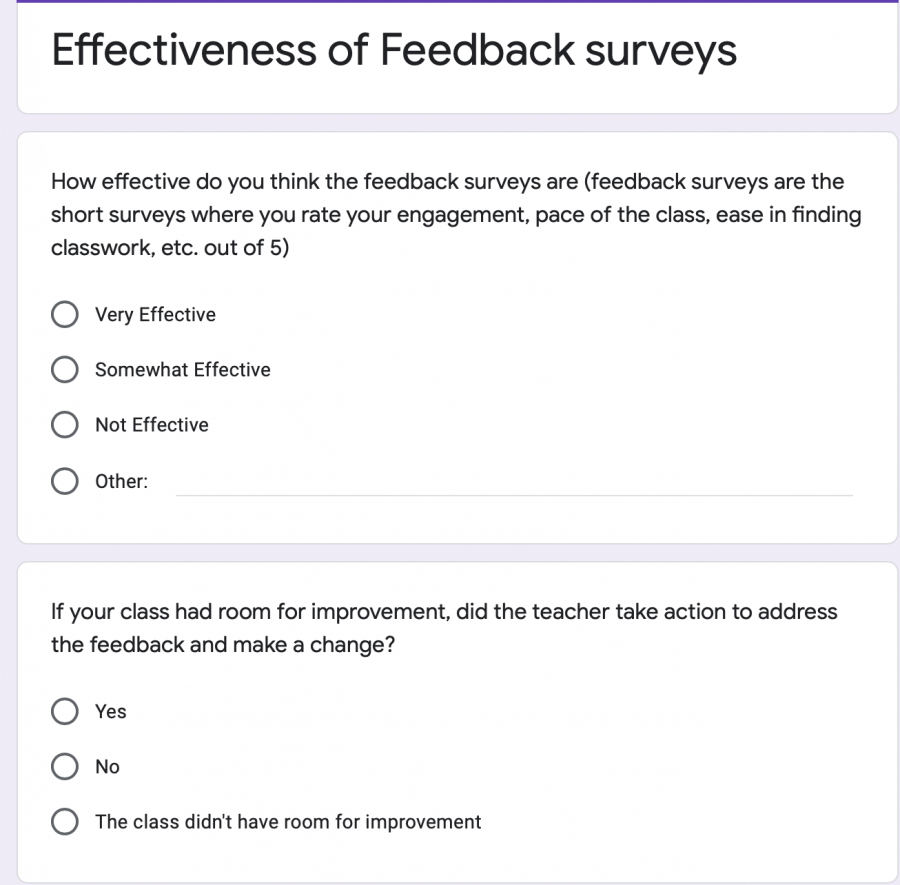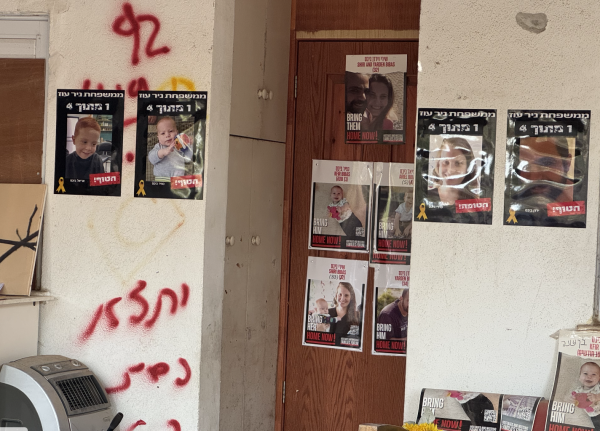Remote Learning Feedback Model Has Room to Improve
With the return of school in the fall, Latin administrators saw how e-learning would inevitably result in miscommunications between students and teachers. Feedback is naturally exchanged in person as it can arise in a casual conversation, or by the teacher sensing the class atmosphere and adjusting accordingly.
The proposed solution: a student feedback survey that provides “a holistic sense of how our students are coping with remote learning and how we, as teachers, departments, and a division, are providing for [students’] basic academic needs,” as explained by Upper School computer science teacher Leah Wolf. “We can track trends in our individual classes and departments to help us identify best practices and modify our approaches accordingly.”
These feedback surveys indeed give teachers the ability to check the temperature of their classes, but the perceived effectiveness of the surveys is controversial.
When asked about feedback surveys in general, English teacher James Joyce shared, “When an institution gives a survey and listens to the results, shares them out, and discusses what will change, I’d say their intentions are caring. When an institution gives a survey and does not follow up with how such info will be used to better the community, I’d say their intention is to create the illusion of a caring relationship. The former builds lasting relationships, the latter leaves folks feeling duped.”
This distinction seems to resonate with a lot of students who feel like the surveys are pointless and predatory. “I do not answer the survey questions honestly, because I know they are not anonymous,” said freshman Asher Patent. “I know people who have been confronted about their responses, so their feedback is always positive.”
The feedback surveys don’t place a particular emphasis on freshmen, which might be a beneficial adjustment, considering the unfamiliarity of high school to them. “As someone who teaches a significant number of ninth grade students, I think it’s critical to know how everyone is adjusting to the workload, reaching out to teachers, and finding ways to be social in a new school,” said Upper School computer science teacher Leah Wolf. Unlike many classes, computer science includes students from all grade levels. Classes like these with upperclassmen can be intimidating to a new student who doesn’t know anyone.
Doing away with the anonymity that surveys like these often rely on targets students aiming to give negative feedback and makes it difficult to to gauge accurate results. Asking a student to justify their negative responses could be easily avoided by adding a place for short sentence elaboration as feedback. In response to whether the feedback surveys are necessary, Asher answered, “Yes, if they are promised to be fully anonymous.” Anonymous surveys could be the key to precise results, even if teachers are no longer able to follow up with a student who gives negative feedback.
The survey isn’t seen by all in this way. Sophomore Coco Koloskov said, “I do answer the survey questions honestly. I feel as if I have a responsibility to my teachers to assist them and give them feedback if I have a problem or request on how to improve the class.”
Still, there is immense room for improvement in the specificity of the questions, as well as in how the questions are answered. Rather than an arbitrary 1-5 rating, short sentence feedback could really assist teachers and give them more direction when improving their class. “They should be edited to specifically relate to each class,” Coco said. “The broad surveys do not account for real, specific feedback; there need to be modifications.”
From the perspective of faculty, surveys are truly one of the only semi-private ways of “checking in” on their classes, considering how much body language and atmosphere cannot be sensed over Zoom. It’s easy for a teacher to misjudge the pace and workload of their classes, and the frequent check-ins can offer students a place to share when they feel overwhelmed, even if it is as unambiguous as a 1-5 scale rating. Giving honest feedback does require a certain level of trust, one that might remain to be fully established at Latin, simply because the school hasn’t explicitly given students reason to trust their actions. However, Mr. Joyce said, “The feedback helps me notice things that I’ve overlooked.” He expanded on the benefits he sees, saying, “They offer suggestions that’ll lead toward a more unified, helpful environment. If I know when a few students feel ‘lost at sea’ or overlooked, there’s going to be something to gain from rethinking my lessons.”
By this approach, a small number of students expressing their problems with a class can benefit everyone, because adjusting a class doesn’t necessarily have a negative impact on students who aren’t struggling. Rather, it creates a more productive class for those who shared their critiques and can give a voice to the students too intimidated to respond with candor.
No one can deny that there are lots of issues with the way the surveys work, but with the right adaptations, there is also no denying how beneficial the surveys have the potential to be. It’s not uncommon for a workplace or any system with hierarchy to frequently check in on those who have less of a voice. Ultimately, checking in only improves students’ trust in those in positions of power, especially if feedback is met with adjustment. Latin is completely capable of establishing a culture of forthrightness and this is simply a starting point, brought on by COVID-19, and ideally continued well into the future.



















































